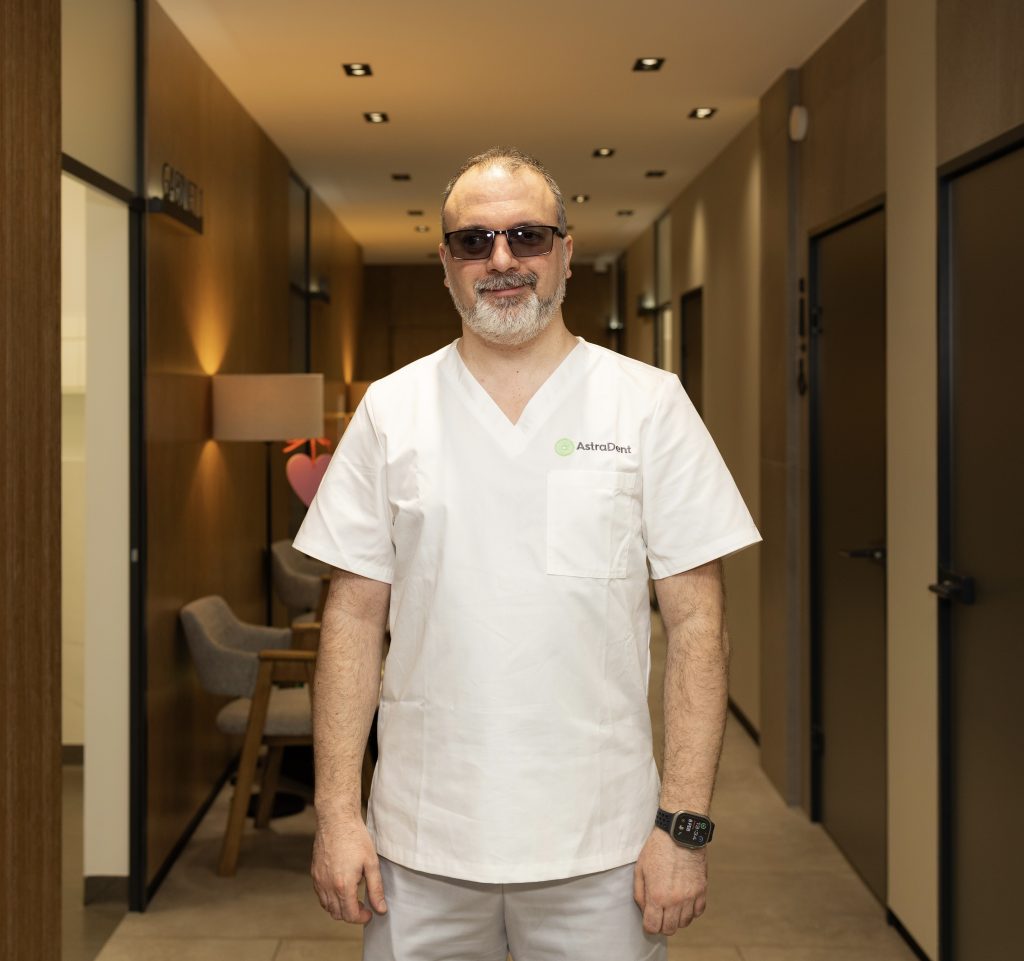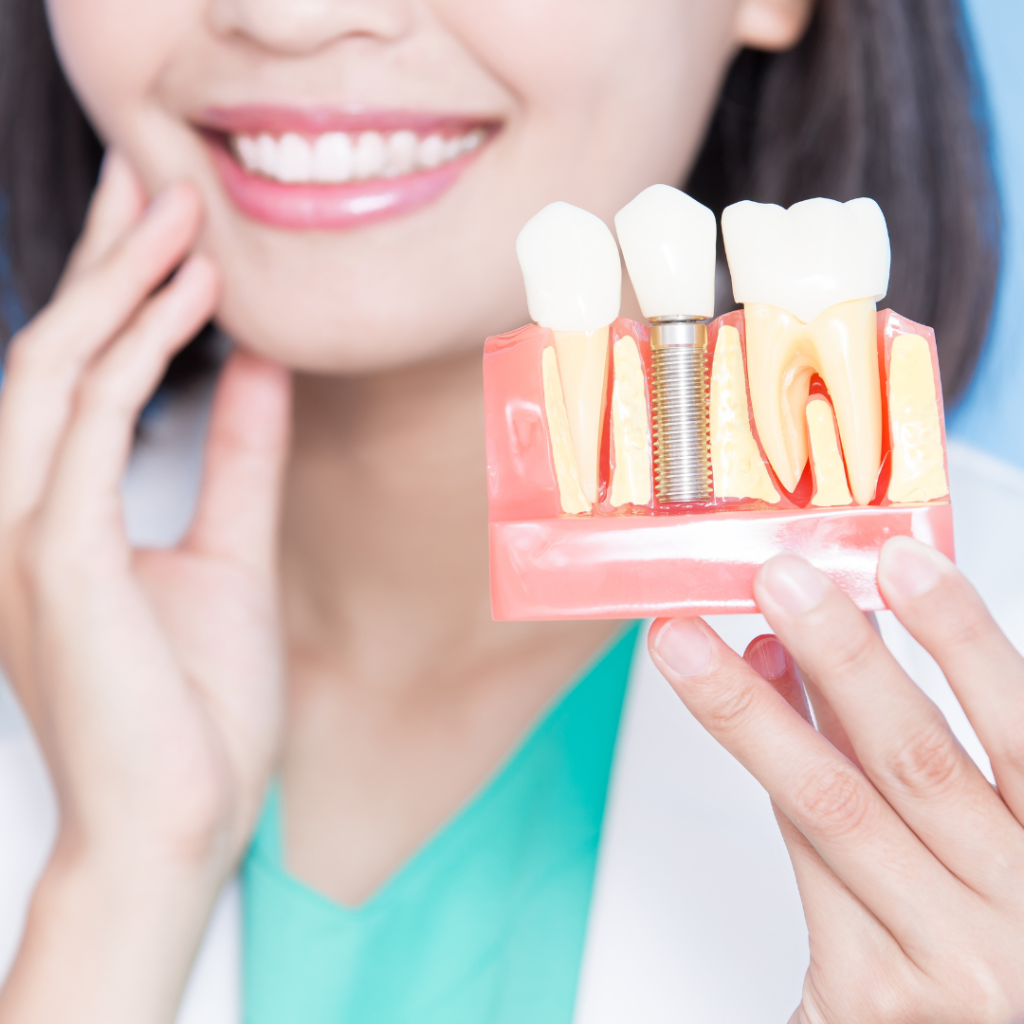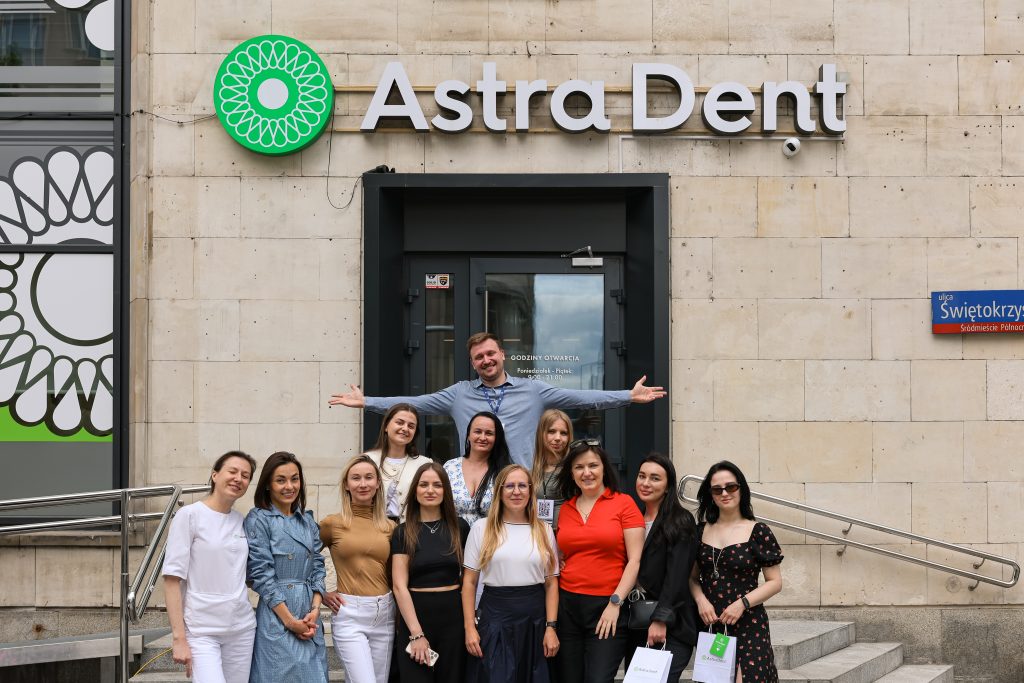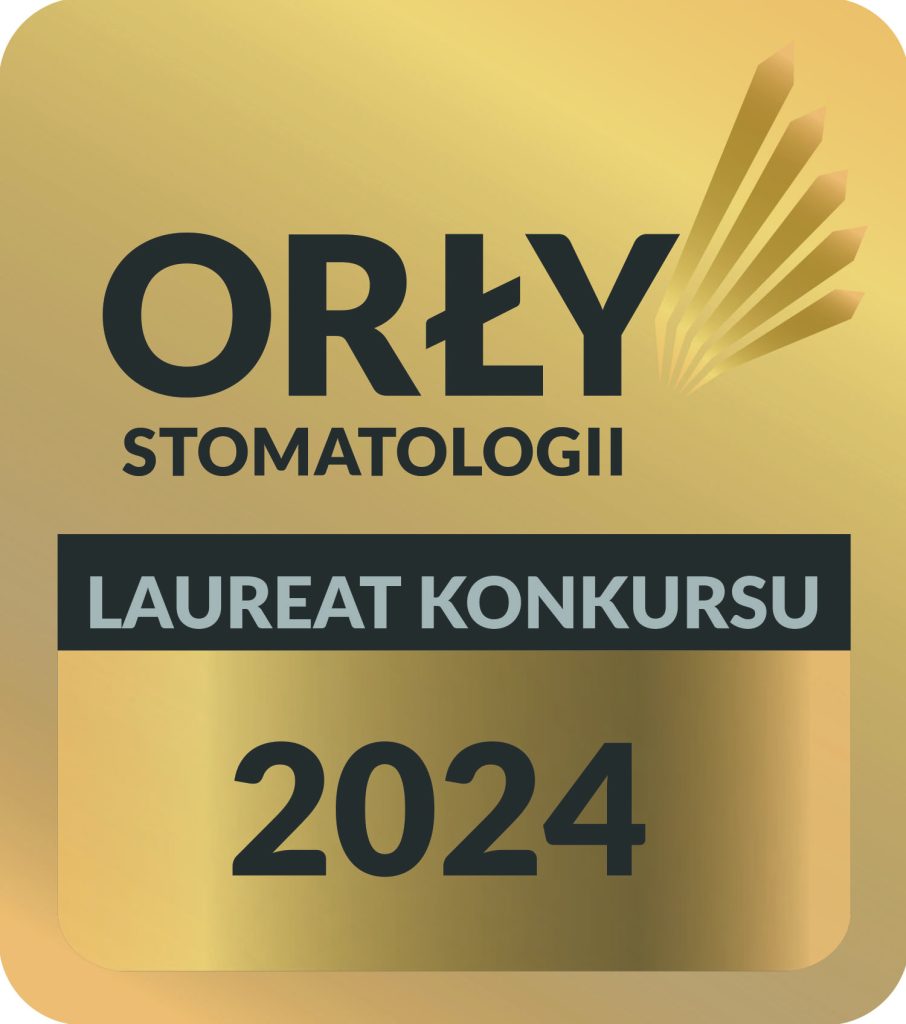Splint therapy in Warsaw – jaw protection, pain reduction, tooth preservation
Splint therapy is a modern method of stabilizing the jaw and muscular apparatus, which helps relieve tension, reduce pain and prevent tooth decay. The essence of the technique is to make an individual mouthguard (splint), which exactly repeats the contours of the dentition and distributes the load during chewing and jaw compression. According to the Cochrane review, the effectiveness of the therapy is felt within the first weeks of use: splints reduce pain and muscle discomfort in most patients.
The manufacture of special mouthguards at Astra Dent involves digital modeling, taking intraoral impressions, occlusion analysis on the articulator (checking the closure of the teeth on a device that simulates jaw movements) and the use of polymer materials that are resistant to loads and biocompatible with the tissues of the oral cavity. The technique is suitable for adults and adolescents suffering from temporomandibular joint (TMJ) dysfunction, bruxism (nighttime teeth grinding), frequent pain in the masticatory muscles, tooth abrasion, increased enamel sensitivity, as well as for athletes to protect their teeth during training.
Why do patients choose Astra Dent Warsaw for splint therapy?
The choice of a medical institution for splint therapy affects the accuracy of treatment, patient comfort and long-term results. Astra Dent patients can count on comprehensive care that takes into account the anatomy of the jaw, the condition of the joint and muscles, and individual bite characteristics.
Advantages of splint therapy at Astra Dent:
- A team with experience in gnathology. Doctors have been trained in leading European centers and specialize in the treatment of TMJ dysfunction, bruxism, muscle pain and pathological tooth abrasion.
- Using modern diagnostic technologies (3D analysis, T-Scan, etc.). The dental center uses a digital scanner to build a 3D model of the dentition, and the T-Scan system helps to determine the strength and sequence of teeth closure with micron accuracy.
- High-quality materials for the manufacture of splints. The caps are made of hypoallergenic biopolymers that retain their shape under load, withstand abrasion and do not cause irritation of the mucous membrane.
- The possibility of a comprehensive approach — orthodontics, implantation, joint treatment. If necessary, the patient receives consultations from related specialists – an orthodontist, surgeon, implantologist, — which is important for maintaining long-term results.
- Ukrainian-speaking team. Communication with the patient during the treatment of TMJ and other pathologies of the dentofacial system is conducted in their native language, which helps to better understand complaints, explain the therapy plan in detail and answer all questions.
Astra Dent specialists offer individual treatment planning that takes into account the patient’s overall health, lifestyle, and even professional workload. A comprehensive approach eliminates unpleasant symptoms and prevents disease recurrence, providing long-lasting results.
What is a splint?
Modern dentistry uses a jaw splint as a high-precision tool for stabilizing joints, relieving muscles, and preventing tooth wear. It is an individually manufactured medical device that takes into account the anatomical features of the maxillofacial system and the specifics of lower jaw movements.
The mouthguards are made of a hard, hypoallergenic polymer that is resistant to stress. It does not deform under pressure, does not change size under the influence of temperature, is easy to clean, and does not absorb odors. Digital scanning of the oral cavity, 3D modeling, and CAD/CAM systems are used in production, which ensure high accuracy of fit, reduce the need for corrections, and shorten adaptation time.
The selection process takes into account:
- type of bite (deep, open, crossbite);
- joint condition (mobility, presence of clicks or pain);
- level of chewing load (for example, when actively chewing on one side);
- tension of chewing muscles according to palpation or electromyography;
- individual habits (teeth grinding, jaw clenching during stress, sleeping on the side or stomach).
Thanks to the precisely calculated shape, the splint evenly distributes the load on the teeth, reduces pressure on the articular disc and relaxes the muscles that work under overstrain. Night wearing is standard, because during sleep the frequency of involuntary contractions increases significantly, and control over the force of jaw compression is practically absent.
A night mouth guard is part of a comprehensive treatment that helps restore the harmonious functioning of the dentofacial system. Astra Dent uses both hard and soft splints depending on the diagnosis, which allows us to adapt the therapy to a specific clinical situation.
Indications for splint therapy
Mouthguards are prescribed after a thorough diagnosis, which includes a clinical examination, digital scanning and, if necessary, a functional examination of the joints. A gnathologist recommends splints if there are the following indications:
- Bruxism (night grinding of the teeth). Frequent involuntary clenching or grinding of the teeth during sleep, which leads to muscle overload and enamel abrasion.
- Pain in the jaw joint. Discomfort when chewing or opening the mouth, which may be associated with overloading the articular disc or inflammation.
- Clicking or locking of the joints. Sound effects or limitation of jaw movement when opening the mouth, which indicate instability in the work of the temporomandibular joint.
- Headaches, muscle tension in the face/neck. Muscle fatigue, pressure in the temples, tension in the chewing muscles and neck, which are mistakenly perceived as a neurological problem.
- After orthodontic or implant treatment. Splints help stabilize the result, relieve joints and maintain the correct bite after complex procedures.
- With worn teeth. Protecting enamel from further wear and reducing the pressure force when closing the jaws.
The use of splints at Astra Dent in Warsaw is based on accurate diagnostic data, which allows us to choose the optimal shape and rigidity of the structure for each case.
How is treatment performed at Astra Dent Warsaw
Treatment begins with diagnosis and ends with monitoring the results. Astra Dent specialists use modern technologies and ensure a clear understanding of the patient’s procedures at each stage of splint therapy.
Initial consultation with a gnathologist
At the initial appointment, the doctor analyzes the patient’s condition, clarifying the complaints — the duration and frequency of symptoms, as well as the factors that provoke them. The clinical examination involves assessing the function of the temporomandibular joint and masticatory muscles. Particular attention is paid to:
- the amplitude of mouth opening and symmetry of lower jaw movements;
- the presence of clicks or friction in the joints during movement;
- pain during palpation of the joints and masticatory muscles;
- the degree of enamel wear and the presence of cracks;
- signs of increased muscle tone of the face and neck.
If necessary, the gnathologist conducts functional tests to assess the coordination of jaw movements and identify possible displacements or blockages. A detailed analysis allows us to form a preliminary diagnostic plan and determine which studies are needed at the next stage.
Diagnostics: CT, digital impressions, bite analysis
The diagnostic stage helps to create an individual treatment plan. Astra Dent uses modern technologies that ensure data accuracy and minimize the human factor. Diagnostics includes:
- Cone-beam computed tomography (CT). Allows to obtain a three-dimensional image of the joint, determine its position, detect changes in bone structures or the articular disc.
- Digital impressions. Instead of traditional impression masses, an intraoral scanner is used, which creates an accurate 3D model of the dentition without discomfort for the patient.
- T-Scan system. Computerized measurement of the closing force and sequence of contacts between the teeth with an accuracy of up to milliseconds.
A comprehensive approach allows us to identify hidden problems, select the most effective splint model and reduce risks during the treatment process.
Manufacturing a splint according to individual parameters
During the manufacture of a mouth guard, individual anatomical and functional parameters of the jaw system are taken into account. The process involves:
- Creating a digital model. Based on 3D scans, a computer model is formed that takes into account the contours of the teeth, the height of the bite and the contact zones.
- Choosing the type of material. The doctor selects a biocompatible polymer of the required rigidity, which is resistant to loads and does not cause irritation.
- Using CAD/CAM technologies. Computerized production guarantees micron accuracy and perfect fit of the mouth guard to the dentition.
- Finishing. The edges are ground and polished to prevent rubbing of the mucous membrane and comfortable wearing.
Thanks to modern technologies, Astra Dent manufactures splints that retain their properties even with intensive use.
Dispensing the mouthguard and training how to use it
When given the mouthguard, the patient is explained the rules for wearing, cleaning and storing:
- Trying on the mouthguard. The specialist checks the accuracy of the fit, the tightness of the fit to the dentition and the absence of pressure on the mucosa. If necessary, a minor correction is made.
- Training in the rules of use. The patient is explained how to properly put on and take off the mouthguard, how many hours a day it should be worn, and what to pay attention to during adaptation.
- Care instructions. The doctor tells how to clean the splint (for example, using a soft brush and neutral detergent), how to store it in a container and what to avoid (hot water, aggressive agents).
- Explanation of possible sensations. The patient is warned about temporary muscle tension or slight discomfort in the first days of wearing, which is a normal stage of adaptation.
Thanks to the instruction, the patient understands the technical aspects of use and learns to control their own condition, which helps to adapt faster and avoid errors in care.
Follow-up examinations and correction when necessary
Regular examinations help to maintain the stability of treatment results and prevent new disorders. During the visits, the following is performed:
- Checking the condition of the splint. The doctor assesses the preservation of the shape, the absence of damage and the correct fit.
- Analysis of clinical changes. The reduction of symptoms, jaw position, joint mobility and muscle relaxation are assessed.
- Correction when necessary. Grinding or polishing of the edges is performed, adjustment of the contact of the splint with the teeth or replacement with a new design.
- Updating recommendations. The doctor clarifies the wearing regimen and gives advice on care according to the current condition.
The coordinated work of the Astra Dent team provides the patient with support at all stages of treatment, including adaptation to the splint, monitoring of results and personalized recommendations to maintain the effect in the long term.
How to make an appointment at Astra Dent Warsaw?
It is worth starting to take care of the health of your jaw and joints now. Astra Dent in Warsaw is staffed by qualified gnathologists and dentists who use modern methods of diagnosis and treatment, including splint therapy.
You can make an appointment for a consultation in several convenient ways:
- write an email to info@astradent.pl;
- call +48 533 599 552;
- use the appointment form on the website, leaving your contacts.
The dental center is open every day: Monday to Friday – from 9:00 to 20:00, on weekends – from 9:00 to 18:00. Appointments are organized without queues and delays. Choose a convenient day and time to receive qualified assistance and take a step towards a comfortable life without pain and tension.

Last update:
16 June 2025, 15:22







